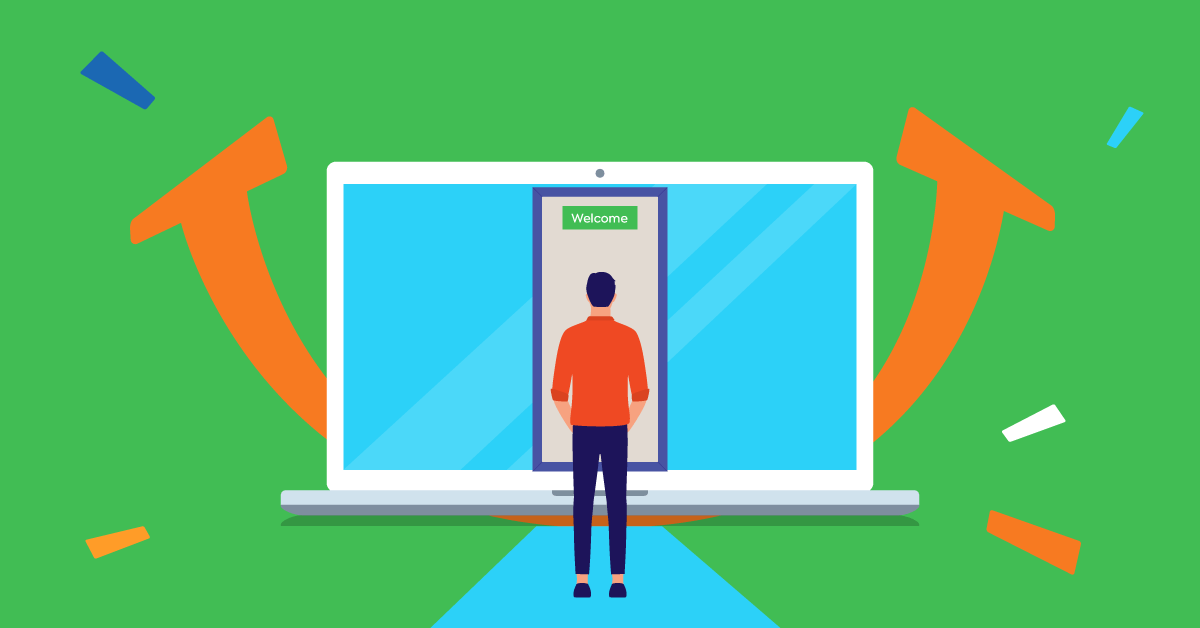 What do successful organizations know about handling and retaining new hires that you don’t? Why is new hire training so critical to an organization? Let’s redefine the role of the HR department.
What do successful organizations know about handling and retaining new hires that you don’t? Why is new hire training so critical to an organization? Let’s redefine the role of the HR department.
Think: talent management. When an employee is hired, the HR is aware their strength and how critical it is to the organization. The hire was a logical result of a gap in talent. An effective HR department knows the monetary value of talent and how it will help fulfill the organizational strategy and KPIs.
Importance of employee onboarding training
The employee onboarding training is not your regular “orientation” program. It is one of the most important eLearning content the employee will work through while in your organization. The approach to building onboarding training is the first line of defense in retaining talent within the company.
It’s like putting “the best foot forward”, or impressing the new hire to make them feel “lucky” to belong to your organization. It’s a careful mix of motivation, organization culture and business process. Onboarding training is all about inspiration. It is an excellent opportunity to demonstrate the potential of your eLearning portal.
Workforce diversity
The modern workforce is diverse in terms of ethnicity, geographic distribution and telecommuting. Employees are hired as part-time, full-time and as contractors. Each type requires its own onboarding training.
A good first impression is the key to help new employees ease into the new work environment. Use your eLearning portal to create a memorable onboarding training that successfully helps each participant make a smooth cross-over. Bear in mind that you want to engage the new employee, acquire their complete potential and actualize themselves professionally and personally. It is also a guidance and feedback on any questions new employees may have about a situation or place.
Let’s look into these 8 effective onboarding training developments in the eLearning environment:
-
Flexible Design
Not knowing your learner while planning your onboarding training is not a fun position to be in. When designing any eLearning material, learner analysis is a must. Use the known learning styles of adult learners to guide you. Accommodate these needs by integrating visual, audio and interactivity.
Another way to ensure flexibility in design is to organize the content into independent modules. This will enable the learner to navigate through the course as they desire. A structured (especially lengthy) first eLearning will unintentionally set the tone for the upcoming trainings! Embed from you organization’s learning curriculum, several work and life philosophies. Show-off your popular courses, while arranging everything in an easy to navigate manner. In other words, give the learner the feeling that they are in control of their learning material.
-
Clean Looks
What is the core objective of an onboarding training program? Selling your brand, boasting about your latest product, talking about the ongoing research and development, press coverage and awards and any humanitarian recognitions. How can you do that clearly?
- Use a tone that talks to the learner. It’s about the learner not the organization. You are encouraging the learner to relate and respond positively.
- Onboarding trainings usually last relatively longer than other trainings in terms of periodic updates. Make sure you get the look right from the beginning. Create an exemplary version of your activities, services and products.
-
Impress
Hook the new hires right from the very beginning. Don’t make them question their judgment on accepting your offer! Include these 3 Bs’ in your onboarding training:
NOTE: It’s all about emotional tagging within the training material!
-
-
Belonging
– Welcome the new hires. Make them feel comfortable and belong to your organization from the start.
-
Believing
– Encourage them to believe in your positive values as a business and be proud to be working for you.
-
Behaving
– Demonstrate instances of desirable behavior.
-
-
Clarity
Create a sense of positive reception for the learner. They should feel accepted already. Promote positive messages about the organization in personal growth, family and work balance, educational support, best practices and “insider tips” on how things work. Establish a clear list of expectations both from the organization and the learner. Show them a clear path to success.
-
Realistic
The human-touch is even more critical in the eLearning platform than before. Onboarding training should not be an exception. Narrate real-life stories (horror or inspiring) using images (from willing employees) to show how expectations were actualized and the situation was resolved (or lessons learned if not resolved).
Honest stories like these create a sense of comfort and alleviate any feelings of strict conformance or coercion. Use testimonials from senior managers, on how they started out in the organization and what they did to be successful.
-
Relatable
Junior employees or recent hires can tell relatable stories that resonate with the learner. An honest approach that reveals some surprising details create a sense of belonging. Narrating the real story of the organization is similar to sharing a secret with a new friend. It promotes trust and inclusion. It warms up learners and prepares them for a positive attitude towards peers and performance. Connect new hires with existing employees to prove that they are not alone and that help is a phone call or a door-knock away. Other helpful connection strategies include:
-
- Signing up for live chat sessions with leaders and experts of the organization.
- Discussion boards that talk about common new hire concerns, answered by existing employees.
- Post fun videos that talk about mundane activities around the organization or of employees enjoying their work.
-
Compliance and Standards
Compliance and standards could have been one of the first topics to talk about. Refrain the urge. While these are significant to an onboarding training, consider saving the best for the last. Also, the beauty of flexible, modular design of this training will enable the new hire to visit this section when they want to. Consider these tips:
- Use multimedia that engages and motivates from the onset of this section.
- Using scenarios, provide realistic and explicit examples to demonstrate correct and incorrect compliance of policies and standards.
- Provide feedback and coaching in this section. Answer questions and establish clear expectations using elaborate examples (narrated by an expert or visuals).
-
Basic Information
Prepare the last section for basic information. New hires will still have a lot on their mind!
- What are the flex-work or telecommuting policies?
- What is the pay schedule?
- Where do you hold annual picnics?
Design this special eLearning course with extra care. Bear in mind the anticipations and hesitations of the new hire. Work towards building trust and positive commitment. The good news is that you can incorporate all using a plethora of content development and delivery features available in the eLearning environment.
| Tags: Online Employee Onboarding



Leave a Reply